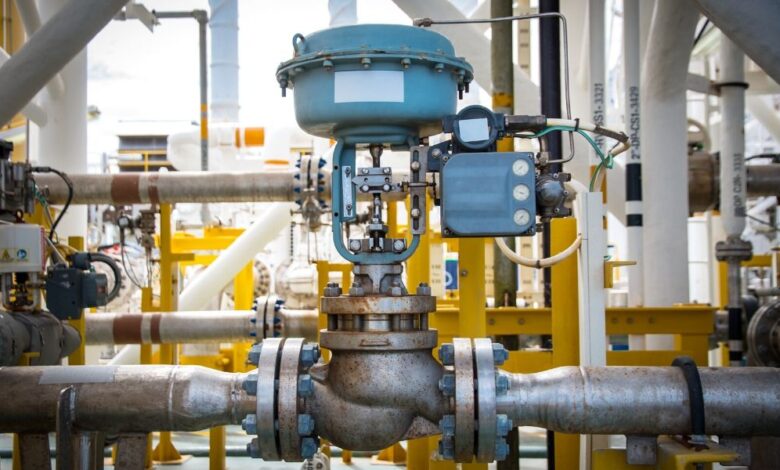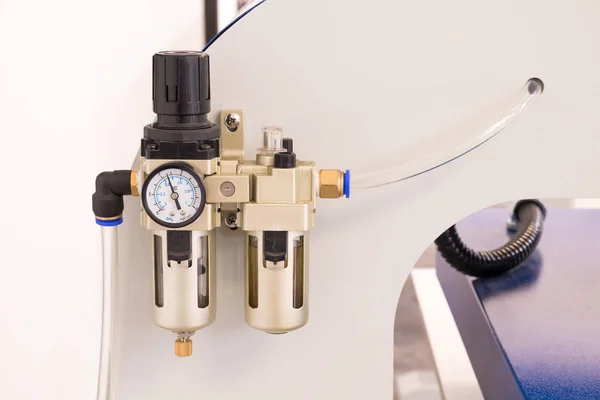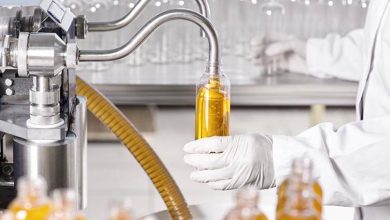Integrating Pressure Controllers and Enclosed Power Supplies for System Reliability Made Easy

In modern industrial and automation systems, reliability is non-negotiable. Pressure controllers and enclosed power supplies play critical roles in ensuring consistent performance and minimizing downtime. When these components are seamlessly integrated, they create a robust foundation for efficient and dependable operations.
By combining precise pressure regulation with reliable power management, systems can achieve higher efficiency and enhanced durability. This integration not only optimizes functionality but also simplifies maintenance, reducing long-term operational costs. Understanding how to align these technologies is key to building systems that stand the test of time.
Pressure Controllers: Maintaining System Accuracy and Stability
Pressure Controller play a pivotal role in ensuring accuracy and operational stability in automation and industrial systems. These devices regulate pressure within defined parameters, maintaining balance and preventing overpressure or underpressure conditions. Consistent pressure management reduces risks to sensitive components and avoids system malfunctions.
Advanced pressure controllers integrate with digital monitoring systems, providing real-time data and automated adjustments. This capability minimizes human intervention and ensures precise responses to fluctuating conditions. For example, in pneumatic systems, pressure controllers optimize airflow to maintain uniform system performance.
Industries relying on high-precision operations, such as semiconductor manufacturing and pharmaceutical production, benefit immensely from the inclusion of pressure controllers. These systems require consistent environmental controls, which pressure controllers reliably provide through automated feedback loops and adaptive programming mechanisms.
How Enclosed Power Supplies Ensure Consistent Energy Delivery
Enclosed power supplies maintain consistent energy delivery by shielding internal components from environmental factors, such as dust, moisture, and temperature fluctuations. Their robust enclosures reduce the likelihood of external interference, enhancing operational reliability across demanding industrial environments.
Integrated safety features, including overload protection and thermal management, ensure enclosed power supplies withstand variable loads without performance degradation. This makes them suitable for systems requiring continuous, stable power output, such as those incorporating precision devices like pressure controllers.
Their compact design supports seamless installation in different setups. By encapsulating the power supply, these units prevent electrical noise and improve energy conversion efficiency, ultimately boosting the performance of interconnected components.
Applications of Pressure Controllers in Industrial Automation

Pressure controllers play a critical role in optimizing industrial automation systems by ensuring precise pressure regulation. They maintain stability in processes like fluid handling and pneumatic automation, where consistent pressure levels are vital for accuracy. For example, in assembly lines, these controllers prevent fluctuations that could disrupt synchronized operations.
In robotics, pressure controllers enable reliable actuation for pneumatic cylinders, improving the precision of movement. This is essential in automated tasks such as pick-and-place operations in manufacturing. Similarly, industries using automated molding systems depend on accurate pressure control to achieve consistent product quality.
Semiconductor production benefits from pressure controllers’ ability to maintain controlled environments required for high-precision fabrication. They regulate vacuum pressures within etching and deposition processes to avoid defects. Pharmaceutical facilities rely on them for maintaining sterile environments during the production of sensitive products like injectables.
Advanced pressure controllers, integrated with enclosed power supplies, ensure operational reliability in harsh conditions. By delivering robust performance in applications requiring continuous pressure regulation, they enhance the efficiency of industrial automation systems.
Troubleshooting Common Issues with Enclosed Power Units
Identifying and addressing problems with Enclosed Power Supplies ensures uninterrupted system performance. Failure to troubleshoot effectively can cause inconsistent energy delivery, impacting connected components like pressure controllers.
Overheating Issues
Excessive heat generation in enclosed power supplies often results from inadequate ventilation or overloaded circuits. Verifying proper airflow and ensuring loads remain within specified limits prevents overheating. Installing thermal management systems or additional cooling mechanisms can address persistent issues.
Output Voltage Fluctuations
Voltage instability disrupts precision devices relying on consistent power, such as pressure controllers. Inspecting for loose connections, damaged components, or external electromagnetic interference helps isolate the cause. Replacing defective parts and shielding the unit from interference restores stable output.
Startup Failures
Enclosed power supplies may fail to start due to issues such as incorrect wiring or blown internal fuses. Ensuring correct input wiring configurations and checking fuse integrity can resolve startup problems. Regular maintenance also prevents recurring failures.
Noise and Vibration
Abnormal noise or vibration in power units might indicate loose parts, fan malfunctions, or mechanical wear. Tightening hardware and replacing damaged fan assemblies eliminates unnecessary movement. Prioritizing regular inspections prolongs the lifespan of the unit and its components.
Unresponsive Safety Features
Non-functional protections, such as overload or short-circuit safeguards, leave systems vulnerable. Testing safety circuits and repairing or replacing faulty elements restores these critical features. Regular calibration ensures these protections operate as intended.
Efficient troubleshooting of enclosed power supplies supports stable operation for interconnected equipment, including pressure controllers, in industrial systems.
Key Features of Advanced Power Supplies in 2025
- High Efficiency
Modern power supplies reach efficiency ratings above 96%, minimizing energy loss. This is vital in systems incorporating precision devices like pressure controllers, where stable power is crucial. - Compact Design
Advanced units feature slim profiles, allowing for easy integration into industrial setups. Compact enclosed power supplies save space without compromising performance, aiding seamless installation alongside other components. - Enhanced Reliability
New designs include reinforced enclosures to protect against dust, moisture, and temperature extremes. These features promote consistent functionality even in harsh environments, safeguarding connected systems. - Smart Monitoring Capabilities
Integrated monitoring systems support real-time diagnostics. When connected with pressure controllers, these features enable automated adjustments and reduce downtime by detecting and addressing faults instantly. - High Output Power Density
Many advanced models deliver over 20W/in³, making them suitable for high-demand industrial operations. This high density ensures adequate power is supplied to interconnected components without performance issues. - Integrated Safety Features
Overload protection, thermal shutdown, and surge suppression are now standard. Enclosed power supplies with these features prevent equipment failure, supporting the operational stability of pressure controllers. - Low Noise Operation
Improved designs focus on reducing electromagnetic interference. This ensures precise operations for systems reliant on sensitive devices like pressure controllers, even in dynamic setups. - Wide Temperature Range Support
Advanced models operate reliably between -40°F to 158°F (-40°C to 70°C). This adaptability makes them suitable for industries with varying environmental conditions. - Modular Configurations
Modular setups allow easy customization and scalability. Users can pair these with systems requiring tailored solutions, such as setups integrating pressure controllers and enclosed power supplies.
The Role of Pressure Controllers in HVAC and Plumbing Systems
Pressure controllers manage system pressure in HVAC and plumbing systems to ensure optimal functionality. They regulate airflow in HVAC setups, maintaining the desired atmospheric conditions for heating, ventilation, and air conditioning. Consistent pressure prevents the risk of overloading fans or damaging ducts, enhancing system efficiency.
In plumbing systems, pressure controllers minimize fluctuations in water flow, preventing issues like pipe bursting or inconsistent water delivery. These devices adjust pressure to stay within safe limits, securing system stability and reliability.
Advanced pressure controllers equipped with digital interfaces provide real-time monitoring for precise adjustments. These features reduce manual intervention, ensuring smooth operation across variable demand scenarios. When integrated with enclosed power supplies, they maintain accuracy by receiving uninterrupted, stable power inputs, even during voltage variations or power surges.
Enhancing Circuit Protection with Enclosed Power Solutions
Enclosed power supplies improve circuit protection by providing a secure environment for critical electrical components. Their robust enclosures shield internal circuits from contaminants like dust, moisture, and debris, reducing the risk of short circuits and failures. This protective design ensures stable energy flows in industrial environments where pressure controllers rely on consistent power input for accurate performance.
Integrated safety features in enclosed power supplies, such as overload protection and thermal management, prevent damage caused by excess current or overheating. These capabilities enhance system resilience by safeguarding connected devices, including precision instruments like pressure controllers, from electrical surges and voltage spikes. Additionally, the low electromagnetic interference design of enclosed power supplies minimizes disruptions in interconnected circuits.
Enclosed power solutions also simplify circuit organization, reducing the likelihood of accidental faults caused by improper wiring. Their compact form factors further enable efficient installation in space-constrained setups, promoting better cable management and system accessibility. When combined with advanced pressure controllers, these solutions deliver unmatched reliability in automation systems by maintaining uninterrupted power and precise operational control.
Smart Technology in Pressure Controller Integration
Smart technology enhances pressure controller functionality by enabling data-driven operations and real-time adaptability. Advanced controllers incorporate features like programmable interfaces, self-diagnostics, and IoT connectivity, streamlining the management of complex systems. These capabilities ensure optimal pressure regulation under varying conditions, maintaining system integrity without manual intervention.
Digital integration within pressure controllers facilitates precise calibration and remote monitoring. Operators access real-time performance metrics to identify inefficiencies, enabling swift adjustments and minimizing disruptions. For systems relying on enclosed power supplies, smart integration synchronizes power stability with pressure control, ensuring seamless operation even during load fluctuations.
Predictive maintenance becomes feasible through smart pressure controllers. Embedded analytics detect potential failures, issuing alerts before critical components degrade. When paired with enclosed power supplies, this predictive capability prevents downtime by maintaining continuous power delivery and accurate pressure levels.
Comparing Power Supply Types for Reliability and Efficiency
Different types of power supplies offer varying levels of reliability and efficiency in industrial systems. Switching power supplies are efficient, converting energy with minimal loss, and perform well in variable load conditions. However, their complexity can result in higher electromagnetic interference, affecting sensitive devices like pressure controllers.
Linear power supplies offer stable output and low noise, making them suitable for systems requiring precise voltage regulation. Though reliable, they consume more energy and generate excess heat under heavy loads, reducing efficiency. For critical systems, enclosed power supplies provide robust protection against environmental factors, ensuring uninterrupted power delivery with enhanced reliability.
Uninterruptible Power Supplies (UPS) ensure continuous operation during power outages, which helps safeguard devices like pressure controllers from abrupt shutdowns. While effective for backup, they require regular maintenance and may not match the efficiency of primary power sources during standard operations. Power supplies must be assessed based on system demands to achieve an optimal balance of reliability and efficiency.
Addressing Safety Concerns with Advanced Pressure Control Systems
Integrating pressure controllers with enclosed power supplies creates a robust foundation for industrial systems, ensuring precision, reliability, and adaptability in demanding environments. These technologies not only enhance operational efficiency but also address safety concerns by preventing equipment failures and maintaining stable performance under variable conditions.
With advancements like real-time monitoring, predictive maintenance, and IoT connectivity, modern pressure controllers and power supplies offer unparalleled control and protection. Their seamless integration reduces manual intervention, optimizes resource use, and supports long-term system sustainability, making them indispensable for industries requiring high precision and reliability.




